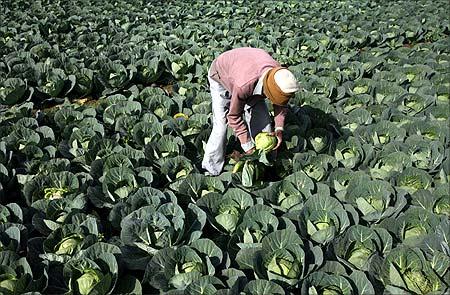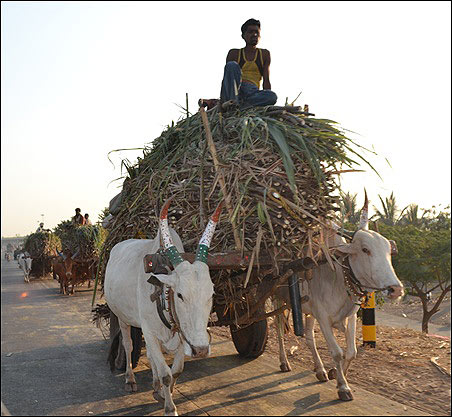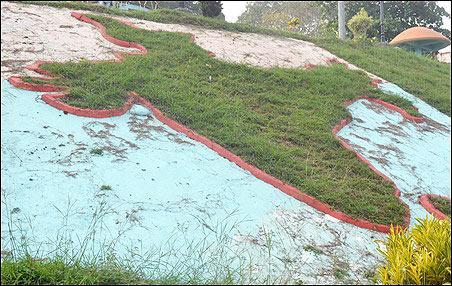 | « Back to article | Print this article |
Column: Mind the expenditure cut
It's good to hear that the finance ministry is keen on reducing the fiscal deficit, but it is equally important to know if that plan is to be implemented through an expenditure squeeze whose quality is suspect
The United Progressive Alliance government will present its 10th Budget next week.
The first five, in its first tenure, were presented by Palaniappan Chidambaram from 2004 to 2008.
The next four, in its second and current tenure, were presented by Pranab Mukherjee.
The 10th Budget will be presented by Mr Chidambaram again.
The first five Budgets came during good times, with average annual growth touching 8.5 per cent.
Click NEXT to read further. . .
Complete coverage: Union Budget 2013-14
Budget Impact Live!
Column: Mind the expenditure cut
In sharp contrast, the four Budgets from Mr Mukherjee were presented in the wake of the global financial crisis and a slowing Indian economy with average annual growth dropping to around seven per cent, thanks to a combination of policy paralysis and mismanagement.
Yet the similarities in these nine Budgets in the crucial area of the government's total expenditure are quite stark, underlining once again that the United Progressive Alliance's fiscal management has remained consistently poor in all these years.
If the expenditure side of the government's Budget did not appear to be a big problem in the first five years of the United Progressive Alliance, it is because it was hidden by higher growth that helped generate higher revenues -- thereby softening the impact of expenditure slippages, which otherwise would have adversely impacted the government's finances.
Click NEXT to read further. . .
Complete coverage: Union Budget 2013-14
Budget Impact Live!
Column: Mind the expenditure cut
No attempt was made during those years to take advantage of the good times and push ahead with meaningful and concrete expenditure reforms.
Thus, higher growth and revenues helped the government meet its consistently rising expenditure; but when the chips were down from 2009, expenditure management became a big challenge and all the associated ills of the economy resurfaced.
Even the economic downturn made no impact on government expenditure, which continued to rise at a healthy pace.
In the last nine years, under the UPA, the government's total expenditure has almost trebled.
Revenues also went up, but a slowing economy meant that the government's fiscal deficit ballooned to well over five per cent of gross domestic product.
Click NEXT to read further. . .
Complete coverage: Union Budget 2013-14
Budget Impact Live!
Column: Mind the expenditure cut
There was yet another problem with the government's expenditure pattern: each of the last nine Budgets had made an attempt at controlling expenditure, but met with little success.
Take a look at the Budget estimates of the government's expenditure and compare them with the actuals or revised estimates: the trend is consistent.
From 2004-05 to 2011-12, the actuals or revised estimates of total expenditure were lower than the Budget estimates only once.
On all the remaining seven occasions, the revised numbers were higher than the Budget estimates.
Worse, if there was any expenditure squeeze in this period, it was evident only from the numbers for capital expenditure.
In as many as six Budgets, the final estimates of capital spending were lower than the Budget estimates at the time these were presented to the Lok Sabha before the start of the year.
Just the reverse happened in respect of the government's revenue expenditure.
Click NEXT to read further. . .
Complete coverage: Union Budget 2013-14
Budget Impact Live!
Column: Mind the expenditure cut
The final estimates exceeded the Budget numbers on six occasions, and only twice were the revised numbers lower than the Budget estimates.
And both the finance ministers who prepared the UPA's Budgets in this period were more or less equally responsible for the slippage that certainly undermined the quality of expenditure management.
Expenditure management is critical for all Budget exercises.
It is even more so when Mr Chidambaram has now committed himself to restrict the fiscal deficit to 5.3 per cent of gross domestic product for the current year and 4.8 per cent next year.
The revised estimates for the government's expenditure in 2012-13 will be out next week and provide a clue to the manner in which the finance minister has managed to reduce the government's expenditure.
Click NEXT to read further. . .
Complete coverage: Union Budget 2013-14
Budget Impact Live!
Column: Mind the expenditure cut
Worse, a similar capital-spending squeeze could happen next year, which would then be bad news for the economy.
There is greater danger to the economy's growth prospects if the government cuts its capital expenditure but fails to rein in its revenue expenditure, which is largely on wages, subsidies and interest payment.
So, it's good to hear that the finance ministry is keen on reducing the fiscal deficit, but it is equally, if not more, important to know if that fiscal consolidation plan is to be implemented through an expenditure squeeze whose quality is suspect.
Click NEXT to read further. . .
Complete coverage: Union Budget 2013-14
Budget Impact Live!
Column: Mind the expenditure cut
Manmohan Singh's first reform Budget in 1991-92 had managed to keep capital expenditure at 4.45 per cent of GDP.
The first Budget of the UPA in 2004-05 saw the capital expenditure ratio at 3.5 per cent of GDP.
Since then, it has fallen steeply and stayed at around the two per cent mark or lower.
In 2012-13, it was projected to be at around 2.16 per cent of GDP.
It is time this number was pulled up substantially even as the government slashes its revenue expenditure.
That kind of fiscal consolidation should yield sustainable and real benefits for the economy and its growth prospects.
A mindless and imprudent cut, focused on the government's capital expenditure, could be counterproductive.







